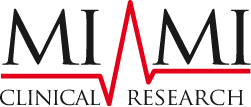Phase II to Phase III Transition Challenges
Phase II to Phase III Transition Challenges
The journey of a new drug from discovery to patient use is a long and complex one, marked by numerous clinical and regulatory hurdles. Among these, the transition from Phase II to Phase III clinical trials stands out as one of the most difficult and high-stakes stages. Known within the industry as the “valley of death,” this phase is where a large number of seemingly promising drug candidates fail—despite encouraging early trial results. The success rate of this transition is often less than 50%, depending on the therapeutic area, highlighting just how fragile drug development can be at this point.


Understanding the Clinical Phases
To grasp why this transition is so challenging, it’s important to understand the primary goals of each clinical phase:
- Phase I trials are conducted on a small number of healthy volunteers or patients to assess safety, tolerability, and dosage.
- Phase II trials involve a larger group of patients and focus on preliminary efficacy, optimal dosing, and short-term side effects.
- Phase III trials expand to a broader patient population across multiple clinical sites and aim to confirm efficacy, monitor side effects in diverse populations, and generate comprehensive safety data for regulatory review.
The jump from Phase II to Phase III is not just a matter of increasing the number of participants—it also requires increased scientific rigor, operational coordination, and financial investment.
Why Promising Phase II Drugs Fail in Phase III
One of the key reasons drugs fail in Phase III is because success in Phase II doesn’t always translate to success at a larger scale. Phase II trials are typically more controlled and include carefully selected patients who are more likely to respond to the drug. Once the trial expands in Phase III, the patient population becomes more diverse, and new variables—such as age, comorbidities, and concurrent medications—can impact the drug’s effectiveness or safety.
Additionally, endpoints in Phase III trials tend to be stricter. While Phase II may rely on surrogate endpoints, Phase III requires statistically significant improvements in clinical outcomes, such as survival rates, quality of life, or disease remission. Drugs that show mild benefit in small populations often struggle to deliver meaningful outcomes on a larger scale.


Operational Complexity and Risk
Phase III trials are incredibly complex from a logistical and operational standpoint. They are global in scope, often involving dozens of clinical sites, thousands of participants, and multiple countries. Managing such trials requires:
- Large, multidisciplinary teams
- Coordinated data collection and monitoring
- Regulatory compliance across jurisdictions
- Real-time problem-solving and contingency planning
Increased complexity means higher costs. A single Phase III trial can cost anywhere from $50 million to over $200 million, depending on the size, duration, and therapeutic area. The stakes are high, and the risk of failure has significant financial consequences for sponsors.
Scientific Challenges and Disease Complexity
Another major barrier during this transition is the inherent complexity of human biology and disease. Many drugs are based on promising hypotheses that work well in animal models or lab settings but fall apart in human trials. Even when a drug is biologically active, the variability of human response—influenced by genetics, environment, and behavior—can result in inconsistent outcomes that fail to meet regulatory standards.
Additionally, diseases like cancer, Alzheimer’s, and autoimmune disorders involve multiple pathways and patient subtypes, which makes designing a “one-size-fits-all” treatment difficult. Without clear biomarkers or patient stratification, clinical trials are less likely to succeed.


Financial and Strategic Impact
Failure at this stage can be devastating. The average cost of developing a new drug can exceed $2.6 billion, and Phase III accounts for a significant portion of that. A failed Phase III trial can also impact investor confidence, stock prices, and future funding for R&D initiatives.
To mitigate these risks, many companies now employ strategies such as:
- Adaptive trial designs, which allow modifications based on interim results
- Use of real-world evidence (RWE) to supplement clinical data
- Artificial intelligence and predictive analytics to identify likely responders
Greater focus on patient-centric trial designs to reduce dropout rates
Regulatory and Strategic Considerations
Regulatory agencies are also recognizing the burden of traditional Phase III studies. Programs such as the FDA’s Breakthrough Therapy designation and adaptive approval pathways in the EU allow for faster and more flexible progression if early data shows significant clinical benefit.
However, these programs still require a rigorous demonstration of efficacy and safety. Sponsors must provide a strong scientific rationale, robust trial design, and validated endpoints to move forward.


Conclusion
The transition from Phase II to Phase III is one of the most pivotal, and perilous, stages of drug development. With high scientific, operational, and financial stakes, it demands careful planning, innovative approaches, and relentless focus. While failure remains a common outcome, advances in technology, trial design, and regulatory science are gradually improving the odds. For companies that can successfully navigate this transition, the reward is not just regulatory approval—it’s the opportunity to deliver life-changing therapies to the patients who need them most.

